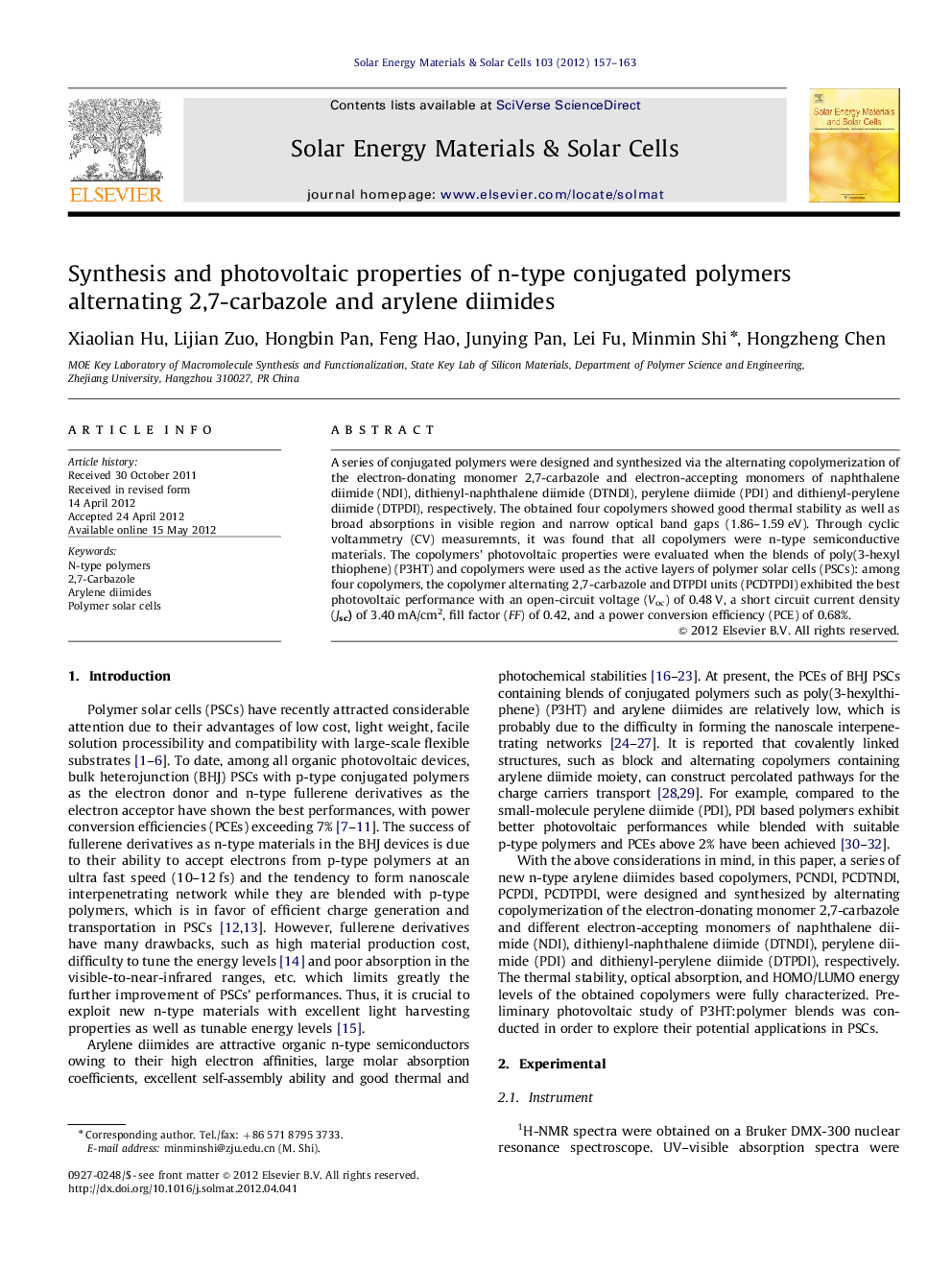| Article ID | Journal | Published Year | Pages | File Type |
|---|---|---|---|---|
| 79091 | Solar Energy Materials and Solar Cells | 2012 | 7 Pages |
A series of conjugated polymers were designed and synthesized via the alternating copolymerization of the electron-donating monomer 2,7-carbazole and electron-accepting monomers of naphthalene diimide (NDI), dithienyl-naphthalene diimide (DTNDI), perylene diimide (PDI) and dithienyl-perylene diimide (DTPDI), respectively. The obtained four copolymers showed good thermal stability as well as broad absorptions in visible region and narrow optical band gaps (1.86–1.59 eV). Through cyclic voltammetry (CV) measuremnts, it was found that all copolymers were n-type semiconductive materials. The copolymers' photovoltaic properties were evaluated when the blends of poly(3-hexyl thiophene) (P3HT) and copolymers were used as the active layers of polymer solar cells (PSCs): among four copolymers, the copolymer alternating 2,7-carbazole and DTPDI units (PCDTPDI) exhibited the best photovoltaic performance with an open-circuit voltage (Voc) of 0.48 V, a short circuit current density (Jsc) of 3.40 mA/cm2, fill factor (FF) of 0.42, and a power conversion efficiency (PCE) of 0.68%.
Graphical AbstractFigure optionsDownload full-size imageDownload as PowerPoint slideHighlights►A series of n-type conjugated polymers alternating 2,7-carbazole and arylene diimides were designed and synthesized. ► Optical, electrochemical, and photovoltaic properties of four copolymers were investigated. ► P3HT:PCDTPDI based polymer solar cell showed the best power conversion efficiency of 0.68%.
